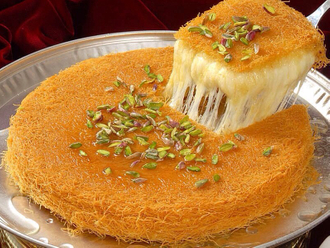Dubai: Have you ever wondered which cities fast the most amount of hours and which cities fast the least amount?
We used the prayer timings of major cities to calculate the intervals between Fajr (preceding sunrise) and Maghrib (marking sunset) on the expected first day of Ramadan, April 13, 2021.
Find out what the UAE prayer timings are during the month of Ramadan from our Prayer Timings page.
For example, Murmansk, Russia has just over six hours of darkness, before the sun rises again at 2.43am. This means that the fasting time there is almost 18 hours. They will end their fast at 8.38pm.
While the city of Ushuaia in Argentina has the shortest fasting time in the world, at 12 hours and 23 minutes exactly. The sun rises at 6.23am and sets by 6.46pm.

Santiago in Chile also has a comfortable fasting time of 12 hours and 41 minutes.
Those fasting in Riyadh can also take advantage of a relatively short fasting day. Fajr is at 4.12am and Maghrib at 6.14am, which means that people in this city of Saudi Arabia will be fasting for approximately 14 hours and 2 minutes.
Dubai will be fasting for 14 hours and 5 minutes on the first day of Ramadan. The first Fajr will take place at 4.39am and Maghrib will be at 6.44pm.
Although those fasting in Kerala have the exact same fasting time as Dubai, it may feel a little longer for them, as Maghrib is slightly later in the day than in the UAE. They are ending their fast at 7pm, and starting their fast at 5.05am, which means they will be fasting, like in Dubai, for 14 hours and 5 minutes.
Egyptians, on the other hand, will end their fast earlier at 6.22pm. Although, technically their fasting hours are longer than the UAE's at 14 hours and 22, their day will feel a bit shorter.
Over in Miami, they get to break their fast at 7.43pm with a nice 13 hour fast. While in New York, the day is slightly shorter as the sun sets at 7.34pm. While up north in Fairbanks, Alaska, Maghrib is at 9.25pm, which means that residents there could fast for up to 17 and a half hours.
Europe also has some pretty long daylight hours. People in Stockholm and Helsinki are fasting for over 17 hours. Then you've got Reykjavík in Iceland, where the sun sets at 8.56pm
Fatwa for fasting
In countries where sunset and sunrise are too close (less than 3 hours apart) or are indistinguishable, fatwas have been issued to allow Muslims to follow the timings of the closest city that has distinguishable day and night timings.
So, if Ramadan were taking place in June, people in Sweden for example would be observing a midnight sun phenomenon, which would make it nearly impossible for Muslims to fast there. So they would look to a neighbouring country to follow their fasting times.
Why do Ramadan fasting hours hardly change in the Middle East?
If you live in a country that is close to the Equator, like most of the Middle East, it is pretty much the same amount of fasting no matter the season. At the Equator, the time between dawn and dusk usually always lasts about 14 hours regardless of whether it is summer, winter, fall or spring.
However, those in the southern and northern hemispheres will experience the most amount of change, as Ramadan moves by ten days each coming year.
At the moment, cities in the southern hemisphere experience shorter fasting time, when Ramadan falls during spring and summer. While those living in the northern hemisphere will typically experience much longer days.
For example, in Glasgow, Scottland, the fast is 17 hours a day during summer and only nine hours a day in winter. To reiterate, in the Middle East, however, it is more or less constant hours throughout, because of it’s proximity to the equator.
Why does Ramadan change every year?
Muslims follow the lunar (Hijri) calendar, which means that Ramadan starts around ten or 11 days earlier every year. Moreover, the dates change every year because the lunar year is less than the Gregorian year by about ten days. Ramadan, therefore, gradually moves between the seasons to fall during summer and in winter.
A lunar calendar is a calendar based on the monthly cycles of the Moon's phases. Similar to the Gregorian calendar, the Hijri one consists of 12 lunar months in a year of 354 or 355 days, rather than 365. It is used to determine the proper days of Islamic holidays and rituals, such as the annual period of fasting and the proper time for the Hajj.








